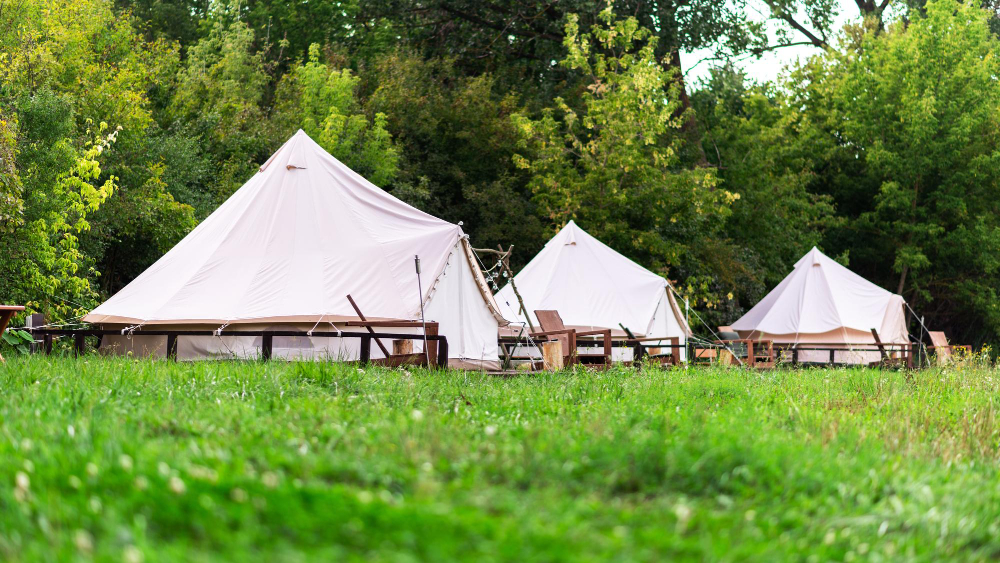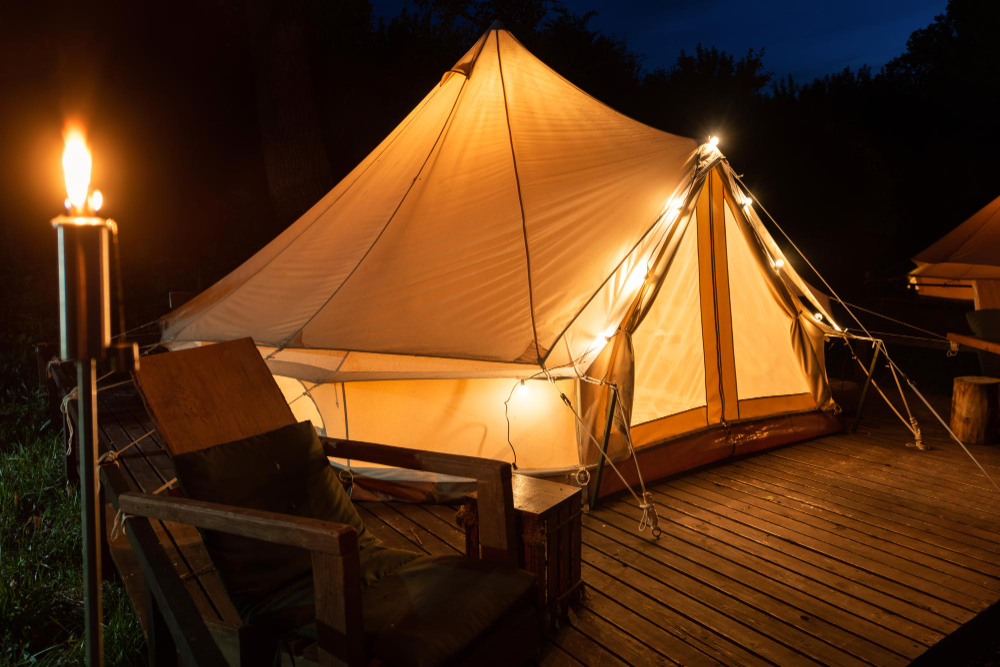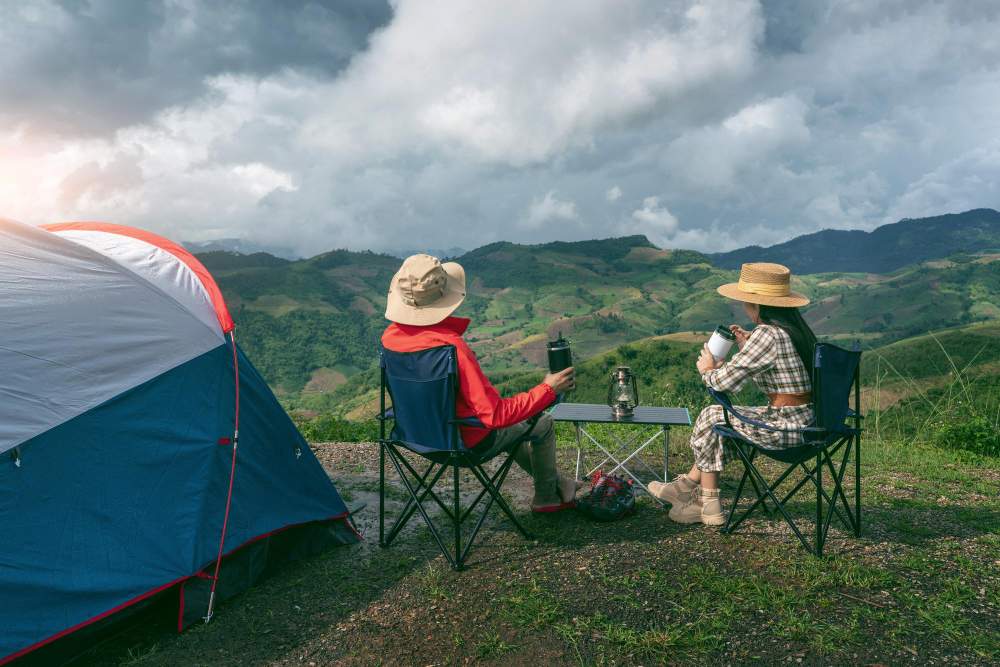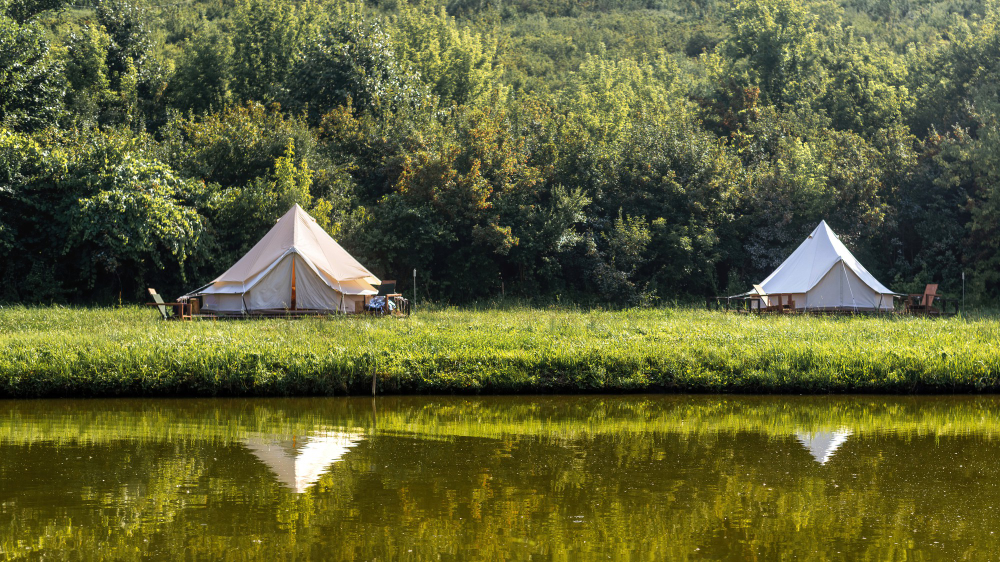Table of Contents
1. Introduction to German Tents
German tents hold a unique place in the world of outdoor shelters, embodying a harmonious blend of tradition and innovation. These iconic structures have not only weathered the test of time but have also evolved to meet the demands of modern outdoor enthusiasts. In this section, we will delve into the fascinating world of German tents, tracing their historical roots and exploring their contemporary applications.
Historical Significance: German tents have a rich and storied history dating back to the medieval ages. They draw inspiration from the nomadic tribes of Europe, who used primitive tent-like structures for shelter during their journeys. Over time, German craftsmanship began to shape and refine tent designs, giving rise to the distinctive conical and canvas-based tents that have become emblematic of German tent-making expertise.
Versatility and Application: While rooted in tradition, German tents have seamlessly adapted to the demands of the modern world. These tents come in a variety of forms, ranging from the classic canvas designs with wooden frames that celebrate traditional craftsmanship to modern, lightweight camping tents designed to make outdoor adventures more accessible.
Cultural Significance: German tents are not merely utilitarian structures; they hold cultural significance for the German people. They symbolize a deep connection to nature and an appreciation for craftsmanship. The designs and materials used in these tents reflect a strong sense of German engineering precision and a love for the outdoors.
In the following sections, we will explore the various types of German tents, their advantages, how to choose the right one for your needs, and their applications in camping, the military, events, and festivals. We will also discuss the sustainability efforts in German tent manufacturing, providing a glimpse into the future of these remarkable structures. Furthermore, we will uncover the influence of German tents on popular culture, showcasing their enduring appeal.
So, whether you’re a seasoned camper, a military professional, or someone intrigued by the legacy of German craftsmanship, this article will provide a comprehensive understanding of German tents and their enduring relevance. Let’s embark on this journey through the world of German tents, where tradition meets innovation in perfect harmony.

2. History and Evolution of German Tents
The history and evolution of German tents provide us with a fascinating journey through time, showcasing the deep-rooted heritage and craftsmanship that have shaped these iconic shelters. Let’s delve into the historical significance and the evolution of German tents:
Historical Origins: The history of German tents can be traced back to ancient Europe when nomadic tribes used rudimentary forms of tents as mobile shelters. These early versions of tents were often simple and made from basic materials like animal skins and wooden poles.
Middle Ages: It was during the Middle Ages that German craftsmanship began to leave a lasting mark on tent design. The iconic conical tents, reminiscent of pointed hats, became a defining feature of traditional German tents. These tents were constructed with wooden frames and adorned with intricate details, showcasing the artistry of the craftsmen.
Craftsmanship and Tradition: German tents of this era were characterized by their durability and intricate design. They were used for various purposes, including sheltering soldiers, travelers, and even nobility during hunts and expeditions. The German people took great pride in their craftsmanship, and these tents were a testament to their dedication to quality.
Blend of Tradition and Innovation: As time passed, German tent design evolved to meet the changing needs of society. While the traditional canvas tents remained a symbol of heritage, German manufacturers also embraced modern materials and technologies. This shift allowed them to create lightweight, easy-to-pitch camping tents that still paid homage to their rich history.
3. Types of German Tents
When exploring the world of German tents, it becomes evident that these shelters come in various types, each with its unique characteristics and applications. Here, we will delve deeper into the two primary categories: Traditional Canvas Tents and Modern Camping Tents.
Traditional Canvas Tents

Traditional German canvas tents are the epitome of Old World craftsmanship. These tents are often recognized for their conical shape, wooden frames, and intricate detailing. They offer a timeless appeal that resonates with Germany’s rich history and cultural heritage.
These tents are typically constructed with durable canvas materials that not only provide excellent weather resistance but also exude a sense of nostalgia. The wooden frames give them a rustic charm that is perfect for historical reenactments, traditional events, or simply for those who appreciate the aesthetic of the past.
Traditional canvas tents are spacious and can comfortably accommodate larger groups. They offer an authentic outdoor experience, and their durability ensures they can withstand extended use. Whether you’re camping in a forest or setting up a historical-themed event, these tents are a perfect choice for those who desire a touch of tradition in their outdoor adventures.
Modern Camping Tents

In recent years, German tent manufacturers have embraced modern materials and technologies, creating a new breed of tents tailored for contemporary outdoor enthusiasts. These modern German camping tents blend innovation with convenience, without compromising on quality.
Constructed with lightweight, high-performance materials, these tents are designed for ease of use. They are easy to pitch, making them ideal for campers who value efficiency. The modern German camping tents often feature sleek, streamlined designs and a focus on portability, allowing campers to carry them effortlessly to remote destinations.
What sets these tents apart is their versatility. They are suitable for a wide range of outdoor activities, from hiking and camping to trekking and festivals. While they may not possess the traditional aesthetic of canvas tents, they make up for it with their practicality and adaptability to various weather conditions.
4. Advantages of German Tents
German tents offer a plethora of advantages that make them stand out in the world of outdoor shelters. Here, we will explore these advantages in detail:
Durability
One of the most notable advantages of German tents is their exceptional durability. These tents are built to last, thanks to the robust materials and meticulous craftsmanship that go into their construction. German tent manufacturers have a long-standing tradition of creating tents that can withstand the test of time and harsh environmental conditions. Whether you’re using a traditional canvas tent or a modern, lightweight version, you can count on your German tent to provide you with shelter for years to come.
Weather Resistance
The unpredictable European weather demands tents that can handle a wide range of conditions. German tents excel in this aspect. They are designed to withstand rain, wind, and even strong sunshine. The combination of high-quality fabrics and well-engineered tent structures ensures that you stay dry and comfortable inside, even during the most challenging weather conditions. This level of weather resistance is a crucial advantage, especially for campers and outdoor enthusiasts who rely on their tents to keep them safe and comfortable in various climates.
Spaciousness
Another advantage of German tents is the generous interior space they offer. German tent designs prioritize providing campers and users with roomy and comfortable accommodations. These tents are not just about protection from the elements; they also offer ample living space. Whether you’re camping with family and friends, storing equipment, or simply looking for a more comfortable camping experience, the spaciousness of German tents is a definite plus. You can move around easily, set up sleeping arrangements, and store your gear without feeling cramped, making your outdoor experience more enjoyable.
5. Choosing the Right German Tent
Selecting the ideal German tent requires careful consideration of several factors to ensure it perfectly matches your specific needs. Here’s an in-depth look at what you should take into account when choosing the right German tent:
Purpose
Begin by identifying the primary purpose of your German tent. Are you planning a camping trip, an outdoor event, or do you need it for military use? Each of these applications will demand different features and designs. For camping, you’ll want something lightweight and easy to transport, while military use may require a more robust and rugged design.
Size and Capacity
Consider how many people will be using the tent. German tents come in various sizes, from compact two-person models to spacious family-sized shelters. Ensure the tent you choose can comfortably accommodate the number of occupants and their gear.
Weight and Portability
If you’re planning to move around frequently, the weight and portability of the tent are crucial. Lightweight, easy-to-assemble tents are perfect for backpackers and campers who need to carry their shelter over long distances. Heavier, more substantial tents may be acceptable if you’ll be using them for static purposes.
Seasonal Suitability
Think about the seasons and weather conditions you’ll be facing. German tents come in three-season and four-season variants. Three-season tents are suitable for spring, summer, and fall, while four-season tents are designed to withstand the harshest winter conditions. Choose accordingly to ensure comfort and safety.
Material and Construction
The materials and construction of the tent greatly influence its durability and performance. Traditional canvas tents offer timeless appeal and robustness, making them an excellent choice for historical reenactments or rustic camping experiences. However, modern tents made of high-tech fabrics are lightweight and often more weather-resistant, making them suitable for contemporary outdoor adventures.
Features and Accessories
Consider additional features and accessories that can enhance your tent’s functionality. This includes features like built-in floors, multiple doors and windows, vestibules for extra storage, and rainfly options. For certain applications, such as military use, you may require features like blackout capabilities and specialized ventilation systems.
Brand and Reputation
Research the German tent brands and their reputations. Brands like Wechsel, Jack Wolfskin, and Hilleberg are known for their quality and innovation. Choosing a reputable brand can ensure that you’re investing in a reliable and well-crafted tent.
Budget
Set a budget for your German tent purchase. While quality tents are available in a range of price points, it’s important to strike a balance between your budget and your requirements. Remember that a high-quality tent is an investment that will serve you well for years.
By carefully considering these factors, you can confidently choose the right German tent that perfectly aligns with your needs, ensuring a comfortable and enjoyable outdoor experience.

6. Setting Up a German Tent
Setting up a German tent is a crucial aspect of ensuring a comfortable and secure shelter during your outdoor adventures or events. While German tents are known for their durability and weather resistance, proper setup is essential to maximize their benefits. In this section, we will elaborate on the steps and tips for setting up a German tent, ensuring a successful experience.
Step 1: Choose the Right Location Selecting an appropriate location is the first step in setting up a German tent. Look for a flat, well-drained area to avoid water pooling inside the tent. Ensure that there are no rocks or sharp objects that could damage the tent floor.
Step 2: Clear the Area Before laying down the tent, clear the area of any debris, sticks, or leaves. Make sure the ground is as clean and level as possible to prevent discomfort and damage to the tent’s floor.
Step 3: Assemble the Tent Poles German tents often come with wooden or metal poles that provide the tent’s structure. Assemble the poles according to the manufacturer’s instructions. This step may vary depending on the tent’s design, so always consult the manual for guidance.
Step 4: Lay Out the Tent Unfold the tent and lay it out flat on the ground. Make sure it’s oriented in the right direction, with the door facing your desired view or entry point.
Step 5: Stake the Corners Most German tents have loops or rings at the corners for stakes. Drive the tent stakes into the ground through these loops to secure the tent’s position.
Step 6: Assemble the Frame If your German tent has a frame, attach it to the tent body as per the instructions. Frames provide additional stability and support for the tent.
Step 7: Raise the Tent With the frame or poles in place, gently lift the tent into an upright position. Enlist the help of a friend if the tent is large, as this will make the process easier and prevent damage to the tent.
Step 8: Secure the Tent Once the tent is upright, check for proper tension in the fabric and make any necessary adjustments. Ensure that the tent is securely anchored to the ground with stakes and the frame or poles are correctly in place.
Step 9: Attach Rainfly (If Applicable) If your German tent includes a rainfly, attach it over the tent body to provide additional weather protection. This is especially important if rain is expected.
Step 10: Test the Zippers and Vents Before moving your gear into the tent, test the zippers to ensure they work smoothly. Check any vents or windows to make sure they can be opened and closed without issues.
Step 11: Arrange the Interior Once the tent is set up, arrange the interior according to your needs. Place sleeping bags, mats, and other gear inside to create a comfortable and organized living space.
Step 12: Enjoy Your Shelter With your German tent set up and ready to go, it’s time to enjoy the great outdoors or the event you’re attending. German tents provide a cozy and reliable shelter that will enhance your experience.
7. Maintenance and Care of German Tents
Maintaining and caring for your German tent is crucial to ensure its longevity, weather resistance, and overall performance. Whether you’re a camping enthusiast, a military professional, or someone who uses German tents for events and festivals, here are some essential tips to keep your tent in top shape:
Regular Cleaning
Regularly cleaning your German tent is the first step in proper maintenance. Use a soft brush or cloth to remove dirt, dust, and debris from the tent’s exterior. Pay special attention to the seams and zippers, as these areas are prone to collecting dirt. For stubborn stains, a mild soap and water solution can be used, but avoid harsh chemicals that can damage the fabric.
Drying
After each use, make sure your tent is completely dry before storing it. Moisture can lead to mold and mildew growth, which can compromise the integrity of the fabric and seams. Set up your tent in a shaded, well-ventilated area to air it out thoroughly. If you must pack it while slightly damp, be sure to unpack and dry it as soon as possible.
Storage
Proper storage is essential to prevent damage during the off-season. Store your German tent in a cool, dry place. Avoid leaving it in direct sunlight for extended periods, as UV rays can weaken the fabric over time. When packing, roll the tent instead of folding it to minimize creases and stress on the material.
Seam Sealing
Many German tents come with factory-sealed seams, but over time, these seals may wear off. It’s a good practice to inspect the seams periodically and reseal them if needed. Special seam sealant products are available for this purpose. Resealing ensures that your tent remains waterproof.
Zippers and Hardware
Check the condition of zippers, snaps, and other hardware components regularly. Lubricate zippers with a silicone-based zipper lubricant to keep them working smoothly. Ensure that all hardware is securely fastened, and replace any damaged or missing pieces promptly.
Repairs
If you notice any tears, rips, or holes in the tent fabric, address them as soon as possible to prevent further damage. Most German tents come with repair kits or patches. Follow the manufacturer’s instructions for making repairs, and consider seeking professional assistance for extensive damage.
UV Protection
The sun’s UV rays can weaken tent fabric over time. To protect your tent from UV damage, consider applying a UV-resistant coating or using a rainfly or tarp when camping in sunny conditions.
Seasonal Inspections
Before each camping season, conduct a thorough inspection of your German tent. This includes checking for any signs of wear and tear, loose stitching, or damaged components. Address any issues before heading out on your adventure.
By following these maintenance and care guidelines, you can extend the lifespan of your German tent, ensuring that it remains a reliable and durable shelter for your outdoor activities. Regular cleaning, proper storage, and timely repairs will help you make the most of your investment in these exceptional tents.
8. German Tents in Various Applications
German tents, with their exceptional craftsmanship and versatility, find applications in a wide array of fields. They are not limited to just one specific purpose but have gained recognition and popularity in various domains. Here’s a closer look at how German tents are utilized in different applications:
Camping
German tents have earned a strong reputation in the camping world. Their durability, weather resistance, and spaciousness make them an ideal choice for campers seeking comfort and protection in the great outdoors. Whether you’re embarking on a weekend camping trip or an extended expedition, German tents provide a reliable shelter that can withstand the elements. Their roots in traditional craftsmanship combined with modern materials and technology create an excellent camping experience, ensuring you stay dry and comfortable even in challenging weather conditions.
Military Use
The German military has long recognized the value of German tents. In military operations, reliability and functionality are paramount, and German tents deliver on both fronts. These Army tents are robust, capable of withstanding harsh conditions, and are quick to set up, making them indispensable in various military applications. Whether they are used as field command centers, medical stations, or troop shelters, German tents provide a secure and dependable environment for military personnel in the field.
Events and Festivals
German tents add a touch of class and tradition to various events and festivals. Their elegant and iconic designs make them a popular choice for gatherings that require temporary shelter with a touch of sophistication. From music festivals to cultural events, German tents offer not only protection from the elements but also a unique and aesthetically pleasing atmosphere. These tents are often used for VIP areas, ticket booths, and even as stages for live performances, creating a memorable experience for event-goers.
9. Sustainability and German Tents
Sustainability has become a pressing concern in recent years, and this awareness has not bypassed the world of German tents. The German tent industry is increasingly embracing sustainable practices, aligning itself with the global movement towards eco-friendly products and manufacturing methods.
One of the key aspects of sustainability in German tent production is the choice of materials. Traditional canvas tents, while durable and iconic, have evolved to use more environmentally responsible fabrics. Many manufacturers now offer tents made from organic or recycled materials, reducing their environmental footprint. By selecting sustainable materials, German tent makers are contributing to the preservation of the environment and reducing their reliance on non-renewable resources.
Furthermore, German tent manufacturers are taking measures to reduce waste during the production process. Waste reduction not only minimizes environmental impact but also lowers production costs, which can benefit consumers. By optimizing the use of resources and reducing waste, these manufacturers are demonstrating their commitment to sustainable practices.
Beyond materials and waste reduction, German tent companies are also focusing on energy efficiency in their manufacturing processes. Adopting energy-efficient technologies and practices not only reduces their carbon footprint but also sets an example for the broader manufacturing industry.
In addition to the production phase, the end-of-life phase of German tents is also considered in the sustainability equation. Manufacturers are designing tents with the option for easy recycling or responsible disposal, minimizing their impact on landfills. This approach not only benefits the environment but also encourages consumers to dispose of their tents responsibly.
Moreover, some German tent brands are involved in environmental initiatives. They support reforestation projects, conservation efforts, and promote outdoor ethics to encourage responsible camping and outdoor activities. By engaging in such initiatives, these companies are contributing to the protection of natural spaces and the promotion of sustainable outdoor practices.
Sustainability is not just a buzzword for the German tent industry; it’s a commitment to preserving the environment and ensuring that future generations can continue to enjoy the great outdoors. With sustainable materials, waste reduction, energy efficiency, and environmental initiatives, German tent manufacturers are not only crafting high-quality shelters but also nurturing a greener, more responsible future for outdoor enthusiasts and the planet.
10. German Tents in Popular Culture
German tents have not only found their place in practical applications but have also made a significant impact on popular culture. They have become iconic symbols and have been featured in various forms of media, including movies, books, and art, further cementing their status as cultural artifacts.
In Movies
German tents have graced the silver screen in a multitude of films. Their distinctive designs often evoke a sense of nostalgia and adventure. These tents have been used to depict various historical eras, from medieval settings to explorations in the wild. In movies, German tents often symbolize the call of the great outdoors, and their presence adds an authentic touch to period pieces.
In Literature
The allure of German tents has not escaped the world of literature. Authors have utilized these tents to create vivid scenes and evoke a sense of place and time. Whether it’s a protagonist’s camping trip or a military encampment, the presence of a German tent can transport readers to different worlds and eras, enhancing the storytelling experience.
In Art
German tents have also left their mark in the world of art. Artists have been captivated by their unique and striking designs, making them subjects of paintings, sculptures, and photographs. The conical shape, often paired with natural landscapes, offers a compelling visual contrast and a sense of harmony with the environment. These artistic interpretations have further immortalized German tents in our cultural consciousness.
In Popular Imagery
Beyond movies, literature, and art, German tents have seeped into our everyday imagery. They are often used in advertising and branding, symbolizing outdoor adventure, quality craftsmanship, and a connection to nature. The iconic design of these tents is instantly recognizable and serves as a powerful visual element that resonates with people across the globe.
15. Conclusion
In conclusion, German tents stand as a remarkable fusion of tradition and innovation, and their significance extends far beyond their practical use. These iconic shelters, rooted in history and forged by craftsmanship, have found a place in the hearts of outdoor enthusiasts, military professionals, and event organizers alike. Their robust construction, weather resilience, and spacious interiors make them a reliable choice for various applications.
From the Middle Ages to the present day, the journey of German tents has been nothing short of fascinating. While preserving their classic canvas designs, they have also adapted to the demands of modern camping and outdoor activities, showcasing their versatility and enduring appeal.
FAQs
Q1. Are German tents only suitable for camping? A: German tents have a broad range of applications, including military use, events, and festivals.
Q2. What makes German tents different from other tents? A: German tents are known for their durability, craftsmanship, and iconic designs.
Q3. How can I choose the right German tent for my needs? A: Consider factors like size, weight, and purpose when selecting a German tent.
Q4. Are there sustainable options for German tents? A: Yes, many German tent manufacturers are adopting sustainable practices.
Q5. What is the cultural significance of German tents? A: German tents are symbols of tradition, craftsmanship, and outdoor enthusiasm.



